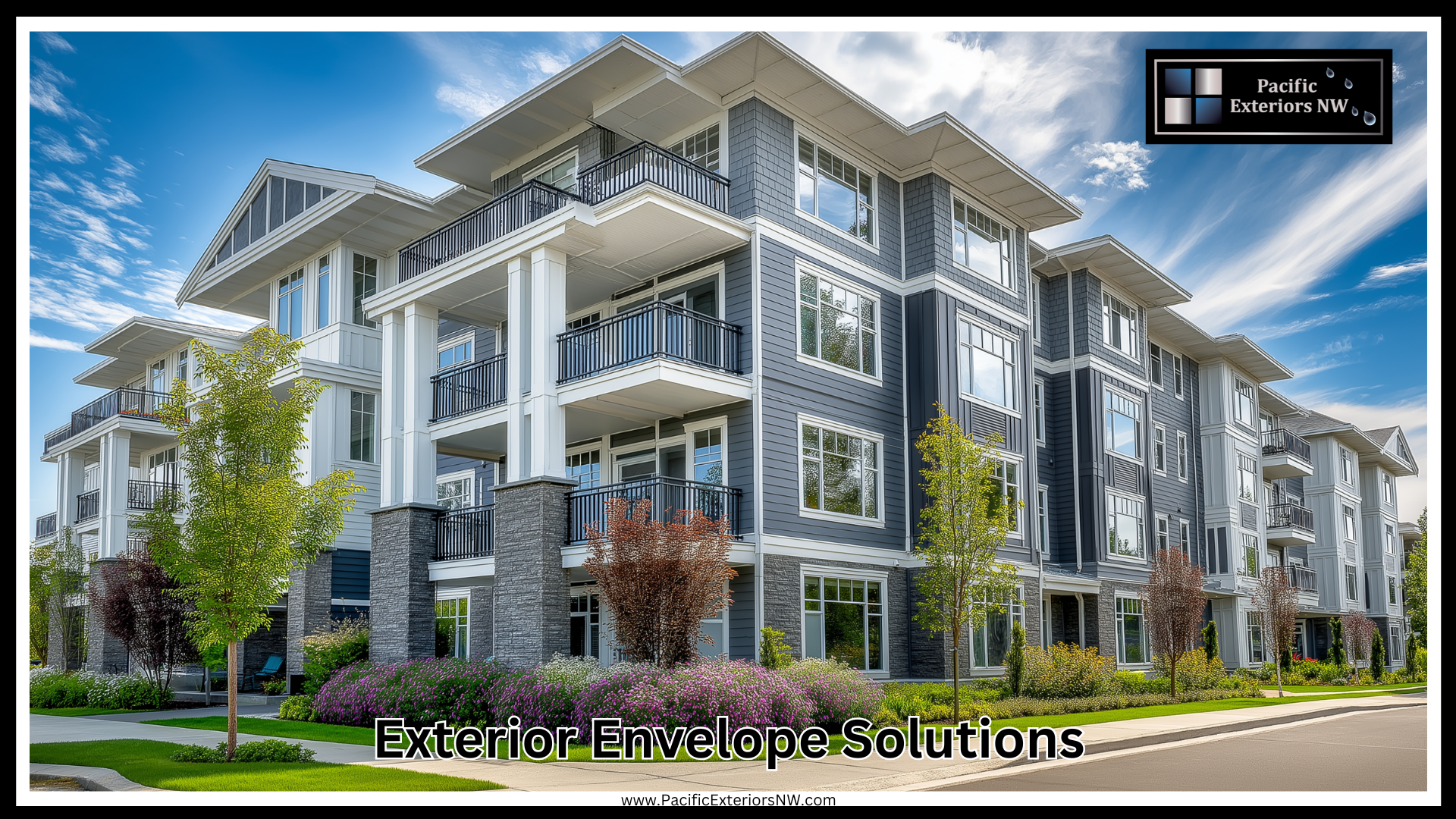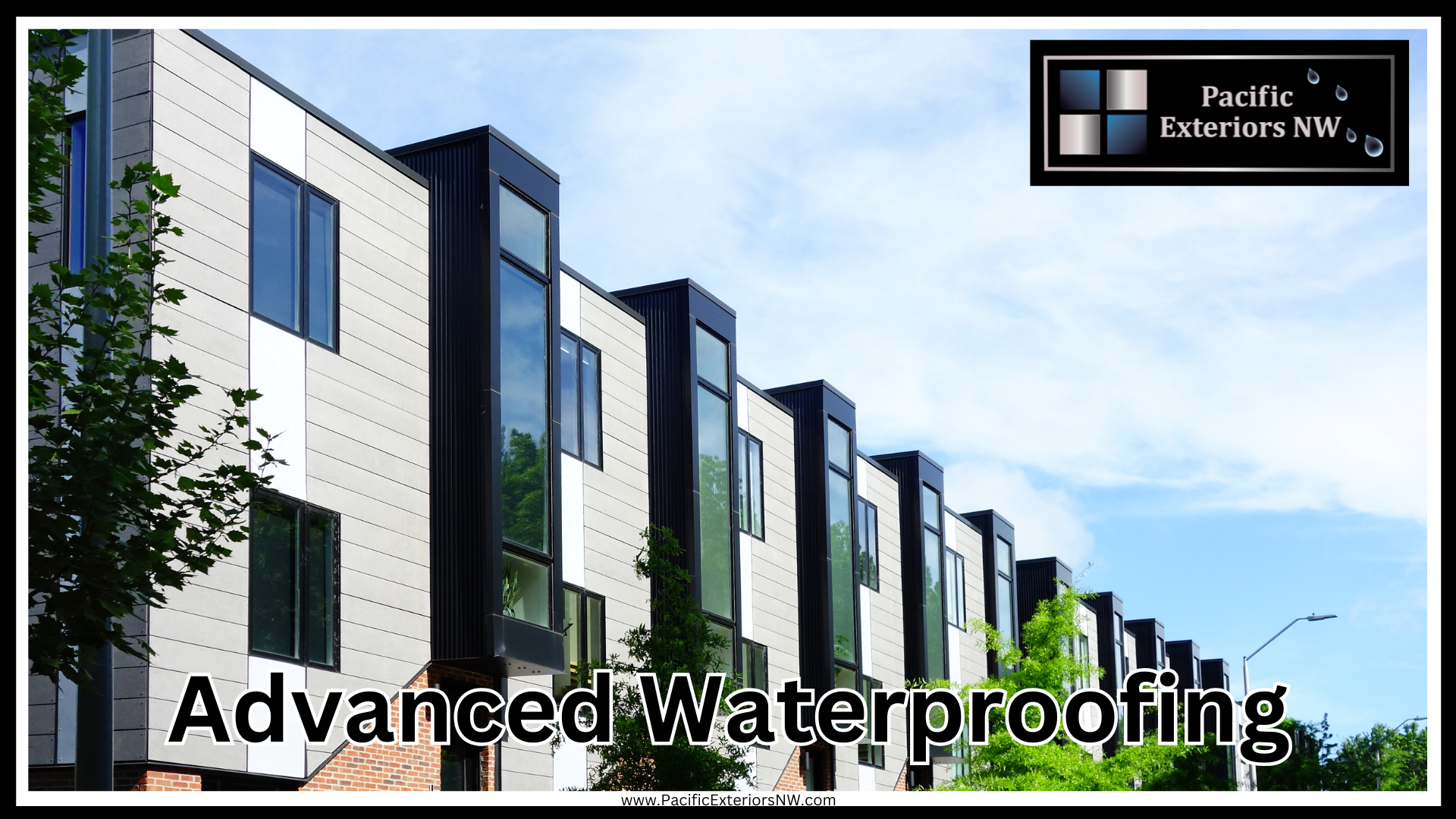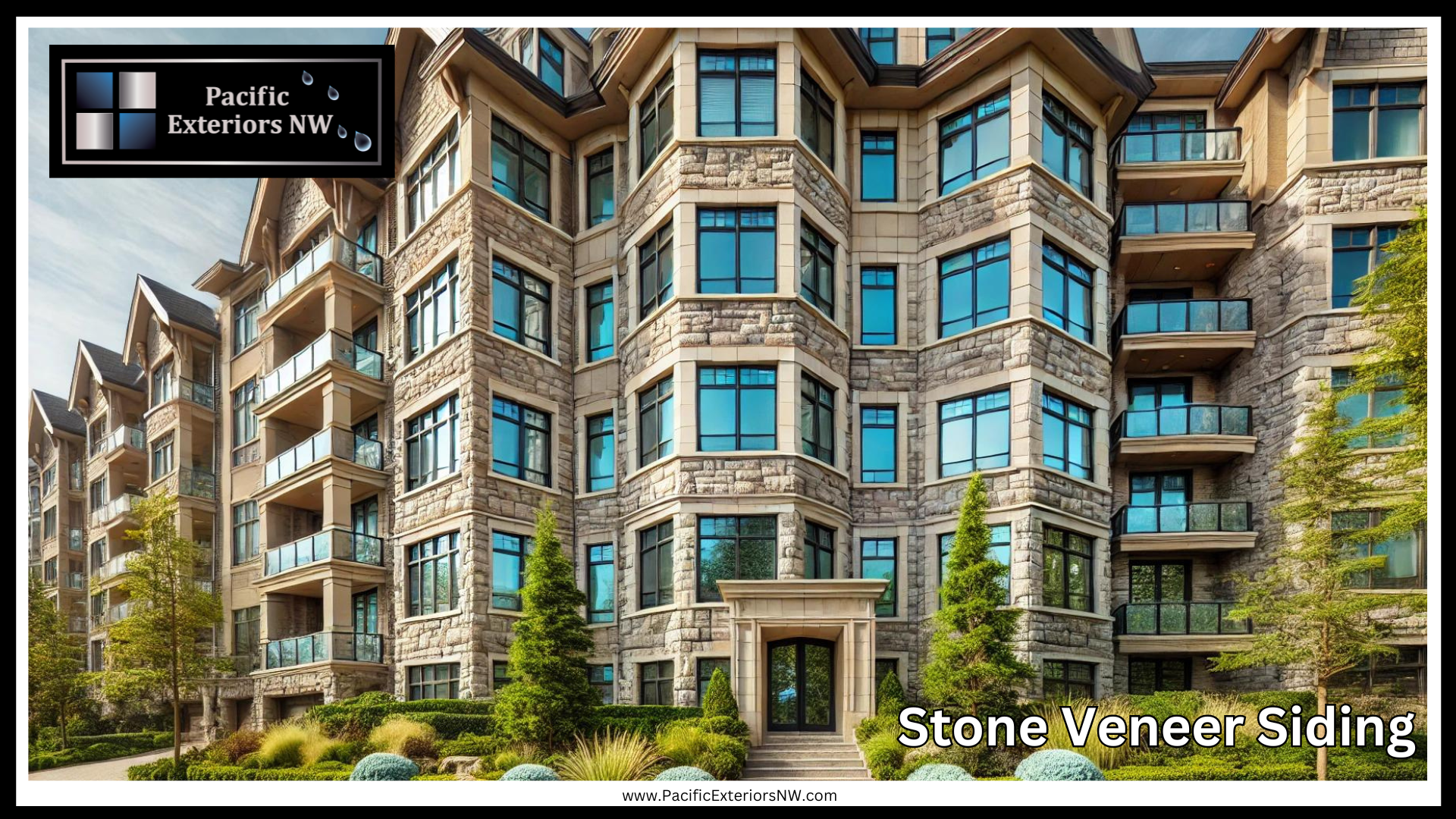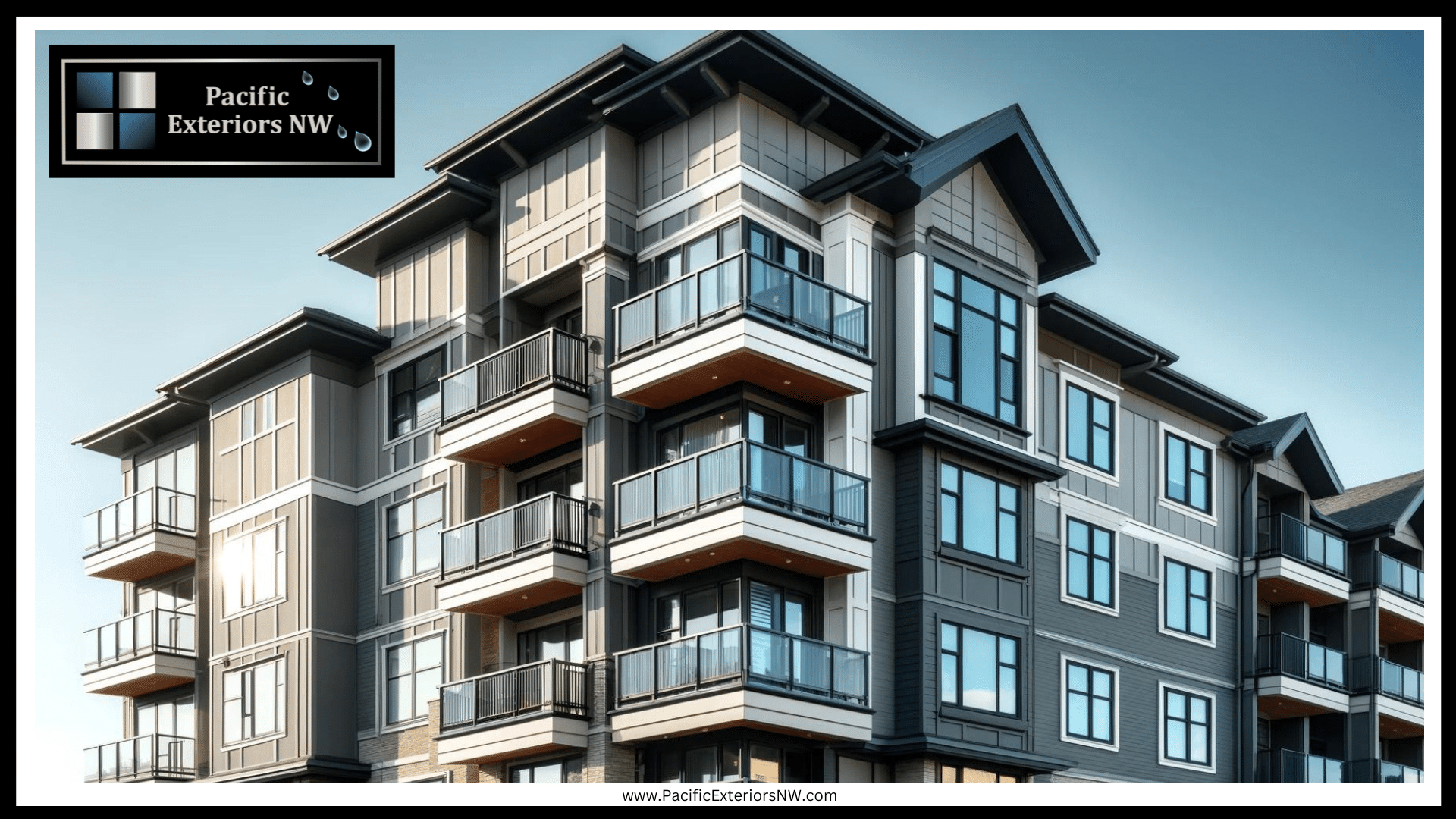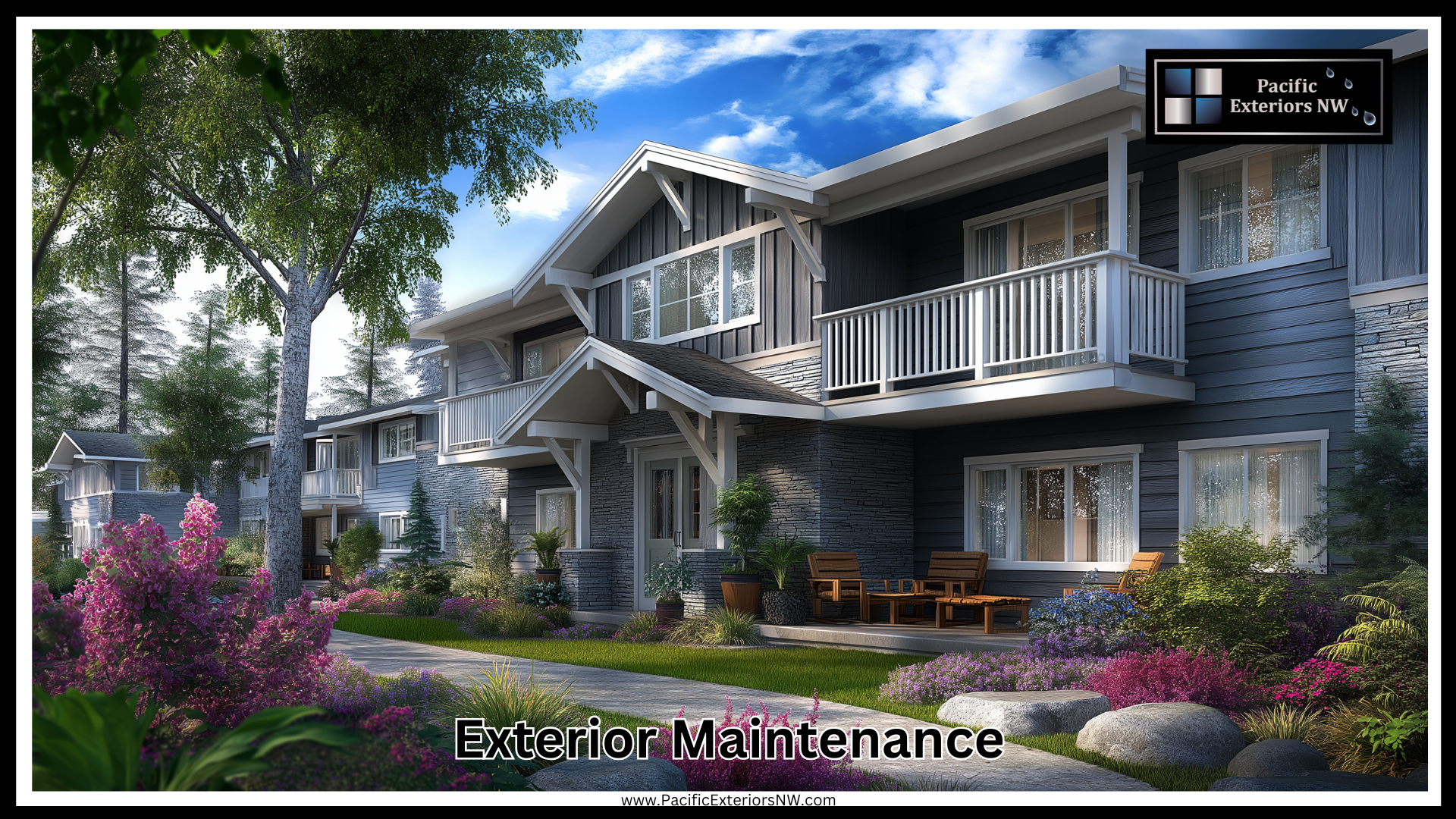
Alright, let’s talk about keeping multifamily buildings in top shape. If you manage or own an apartment complex, condominium, townhome, or even a duplex, triplex, or fourplex in places like Vancouver, Portland, or across Washington state and Oregon, you know the rain and dampness are constant challenges. This guide will focus on the Exterior Maintenance & Care Guide for PNW Multifamily Buildings, helping you stay ahead of the weather and preserve your investment.
The Challenge of PNW Weather for Multifamily Buildings
Multifamily properties come in many forms, from garden-style apartments to towering high-rise buildings, including student housing, senior housing, affordable housing, and even mixed-use developments. Each of these building types faces unique pressures from the Pacific Northwest climate.
We’re constantly dealing with PNW-specific maintenance issues like persistent moss and algae growth on almost every surface, the need for serious mold and mildew prevention, and frequent rain damage repairs. Strong winds mean wind damage assessment is a regular task, and copious debris removal (especially leaves and needles) is a never-ending job, alongside crucial gutter cleaning and regular roof maintenance. You also have to stay on top of foundation moisture control and be vigilant about exterior wood rot prevention.
Key Exterior Building Components to Watch
Every part of a building’s exterior needs attention. We’re talking about the siding systems, all the different roofing materials, the windows and doors (which need constant checks), balconies and decks where residents spend time, stairways and railings for safety, parking structures, walkways and pathways that need to stay clear, all the landscaping areas, and even exterior lighting and signage systems. Each one of these exterior building components has its own maintenance needs.
Essential Maintenance Activities for the PNW
Keeping up with a building in the PNW means having a solid plan for maintenance activities. This includes regular pressure washing to clean off grime and biological growth. Exterior painting not only refreshes the look but also protects surfaces, alongside careful caulking and sealing to prevent water intrusion. Routine window cleaning keeps views clear, and diligent gutter maintenance is non-negotiable. Regular roof inspections help catch problems early, while siding repairs address damage promptly. Deck refinishing is vital to protect wood surfaces, concrete maintenance keeps walkways safe, and constant landscaping upkeep ensures proper drainage and curb appeal.
Maintaining Your Building Through the Seasons
The PNW weather cycles demand specific seasonal maintenance. As spring arrives, spring cleaning protocols kick off, preparing the building for warmer months. Summer preparation focuses on repairs and sealing after the wet winter. Fall weatherization is about getting ready for the rains again, clearing gutters, and checking seals. Winter storm preparation involves de-icing strategies and readiness for strong winds. Seasonal inspections are a must to catch issues before they escalate, and having preventive maintenance schedules helps spread out the workload. Of course, swift weather-related repairs are always part of the picture.
The Role of Property Management
Effective property management is the core of successful exterior care. This involves smart maintenance scheduling and expert vendor coordination to ensure the right personnel are assigned to the job. Clear communication with residents about the work being done is essential. Careful budget planning makes sure funds are available for both routine care and larger projects. Having strong emergency response protocols means you’re ready for unexpected issues. Compliance monitoring ensures all work meets regulations, and using inspection checklists and work order systems keeps everything organized.
When to Call the Pros: Professional Services
Sometimes, you need to bring in the experts. Many property management companies offer these services, or you can directly hire specialized maintenance contractors. For maintaining the grounds, landscaping services are essential. Pressure washing companies can deep clean exteriors effectively. Painting contractors handle large-scale refinishing. For roof issues, you’ll want to hire roofing specialists, and window cleaning services will keep the glass sparkling. Don’t forget pest control services, as critters can also affect the building envelope.
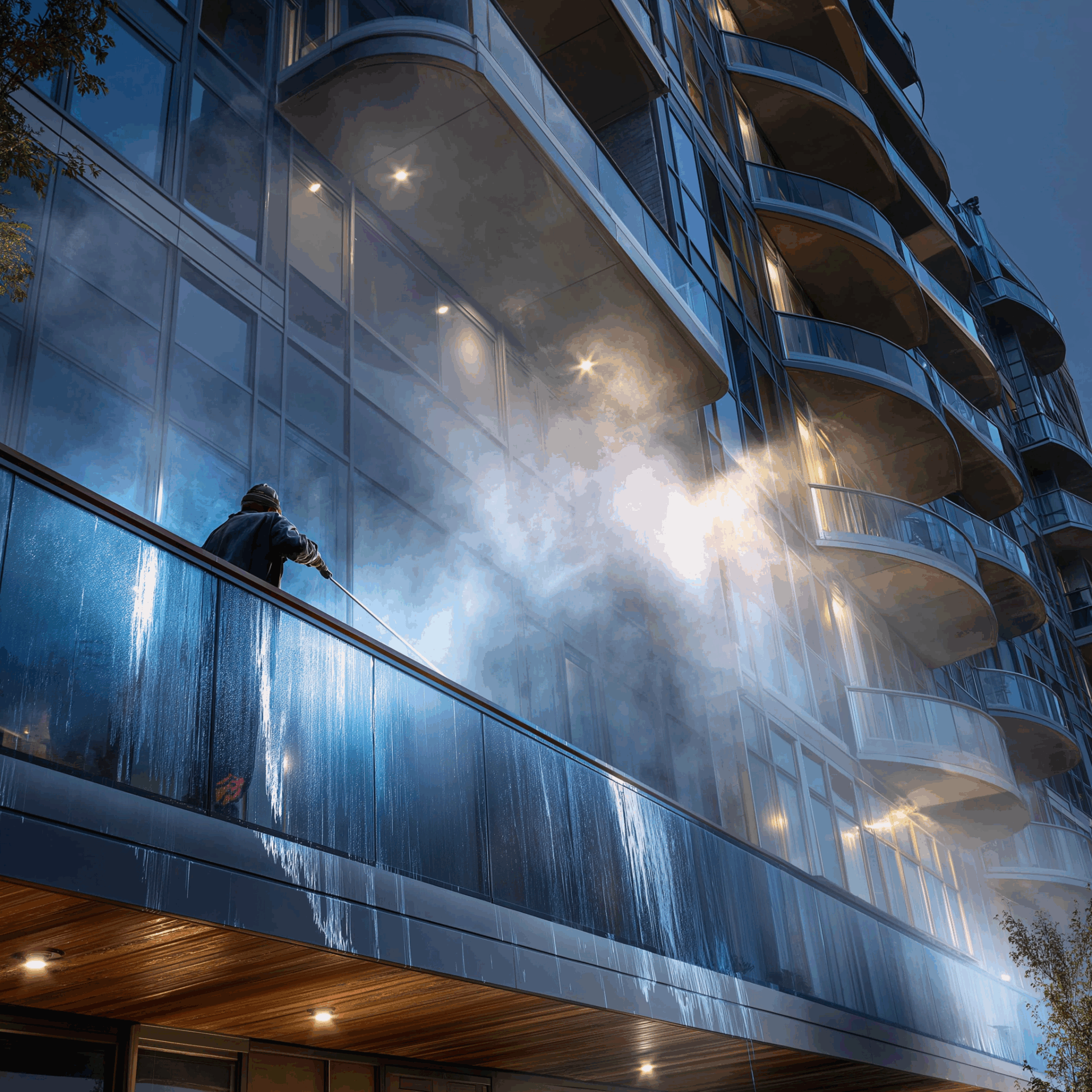
Tools and Materials for the Job
Having the right materials and supplies on hand is crucial. This includes various cleaning solutions, different types of sealants and caulks for sealing cracks, paint and stains for protective coatings, and a stock of replacement parts for common fixes. Landscaping materials are always needed. In winter, de-icing products keep walkways safe, and having the proper cleaning equipment and safety equipment ensures work is done effectively and safely.
Spotting Trouble: Inspection and Assessment
Regular inspection and assessment are your first line of defense. This means doing routine visual inspections of all exterior components. Using moisture detection tools can find hidden leaks. Structural assessments may be necessary for larger concerns, and safety evaluations ensure that all common areas are secure. Keeping up with code compliance checks is a must. Regular tenant walkthroughs can also highlight issues. It’s vital to have strong documentation protocols for all findings and to generate clear condition reports.
Identifying Common Problem Areas
Certain parts of buildings in the PNW tend to face more issues. Common problem areas include exterior wood surfaces (like siding, trim, and decks), which are prone to rot. Metal fixtures can suffer from corrosion. Concrete surfaces might crack or develop moss. Drainage systems are constantly under stress. Exterior stairs and balcony railings need frequent safety checks. Roof penetrations (like vents or skylights) are common leak points. Foundation walls need to be watched for moisture, and parking lots require maintenance to prevent potholes and ensure proper drainage.
Keeping Problems at Bay: Preventive Measures
An ounce of prevention is worth a pound of cure, especially in the PNW. Implementing preventive measures saves money in the long run. This means setting up regular cleaning schedules for everything from gutters to siding. Applying protective coatings (like sealants and paints) helps materials last longer. Ensuring proper drainage around the building and landscaping is key. Vegetation management (trimming trees, keeping plants away from the building) is important. Tenant education can help residents understand their role in preventing issues and maintaining a healthy living environment. Early intervention for small problems stops them from becoming big, costly ones. Investing in good weatherproofing and effective moisture barriers during repairs or upgrades provides lasting protection.
Following the Rules: Compliance and Regulations
Operating multifamily buildings involves numerous regulations. Compliance and regulations play a significant role in exterior maintenance. You need to adhere to local building codes and safety standards. Accessibility requirements (like ramps and railings) must be met. Environmental regulations might impact how you deal with waste or cleaning products. Local ordinances can vary by city (like in the Vancouver rental market or with Portland housing regulations). If your property is part of a homeowners association, HOA guidelines are key. Additionally, you must meet insurance requirements and understand any warranty obligations related to materials or work.
Managing the Money: Cost Management
Effective cost management is always a concern. This involves careful maintenance of budgets, obtaining competitive bids from contractors for larger jobs, and exploring bulk purchasing opportunities for common materials. Understanding the difference between preventive vs reactive costs is crucial: spending a little on prevention saves a lot on big repairs later.
Exploring energy efficiency improvements can reduce long-term operating costs. And finally, robust long-term planning for capital improvements (like major roof replacements or siding overhauls) is essential for the property’s future value, whether it’s in an urban or suburban setting.
By taking a proactive, comprehensive approach to exterior maintenance, multifamily building owners and managers in the PNW can ensure their properties remain safe, attractive, and valuable, standing strong against the region’s unique climate challenges.
Pacific Exteriors NW can help you develop a customized maintenance plan that suits your building and budget.
Frequently Asked Questions (FAQs)
Why is exterior maintenance essential for multifamily buildings in the Pacific Northwest (PNW)?
The PNW’s wet climate, characterized by frequent rain, moss growth, and strong winds, presents ongoing challenges such as mold, mildew, wood rot, and water intrusion. Regular exterior maintenance helps protect property value and prevent costly repairs.
What building components should be regularly inspected and maintained?
Key components include roofing materials, siding, windows and doors, balconies, decks, stairways, walkways, landscaping, lighting, and signage systems. Each requires specific upkeep to ensure safety and longevity.
How should maintenance activities be scheduled throughout the year?
Seasonal maintenance is essential. Spring focuses on cleaning, summer on repairs and sealing, fall on weatherproofing and gutter cleaning, and winter on storm preparedness and de-icing. Seasonal inspections and preventive schedules are also vital.
When should property owners hire professional services for exterior care?
Professional services are recommended for tasks like pressure washing, painting, roofing, pest control, and window cleaning. Property management companies or specialized contractors ensure expert handling of complex or large-scale jobs.
What are some cost-effective strategies for managing exterior maintenance expenses?
To manage costs effectively, owners should develop clear maintenance budgets, utilize competitive bidding, purchase materials in bulk, and prioritize preventive over reactive work. Investing in energy efficiency and long-term capital improvements also helps reduce expenses in the long term.



